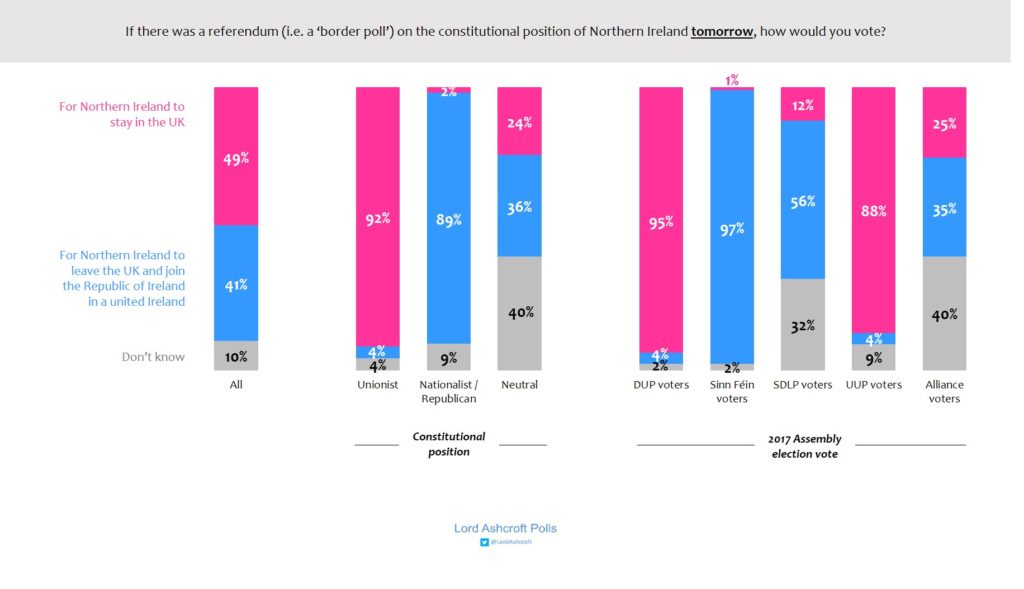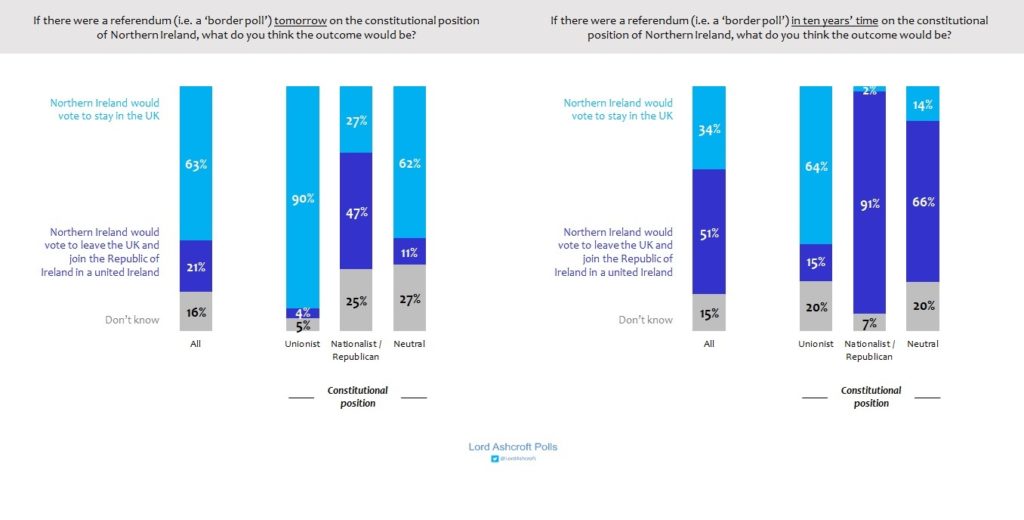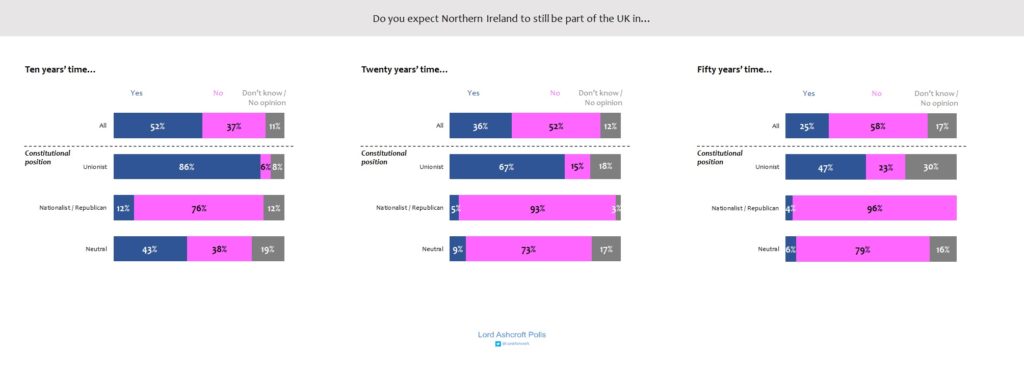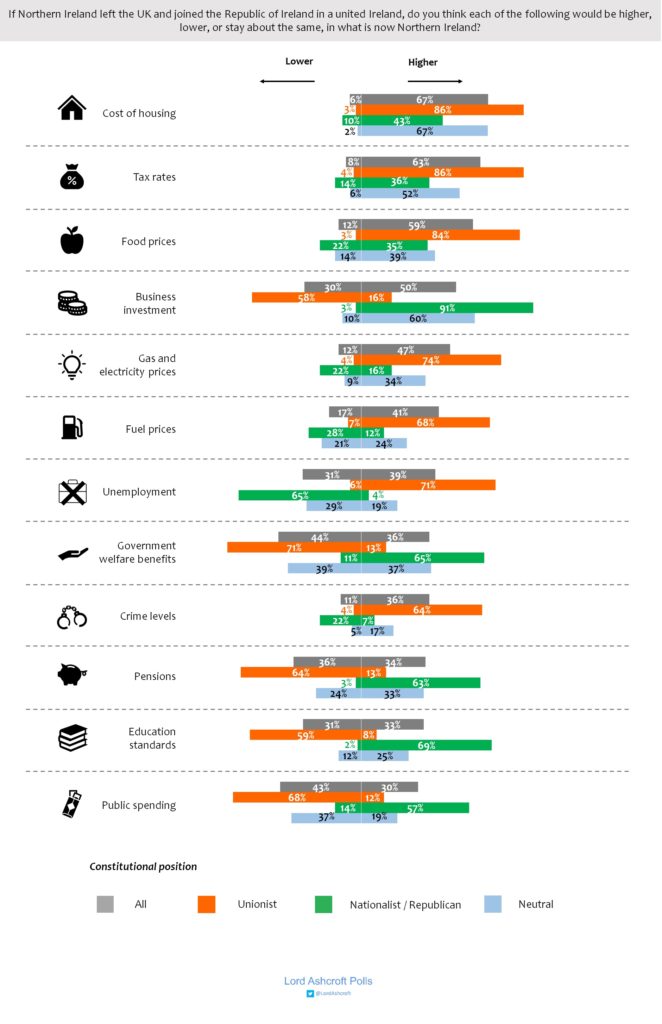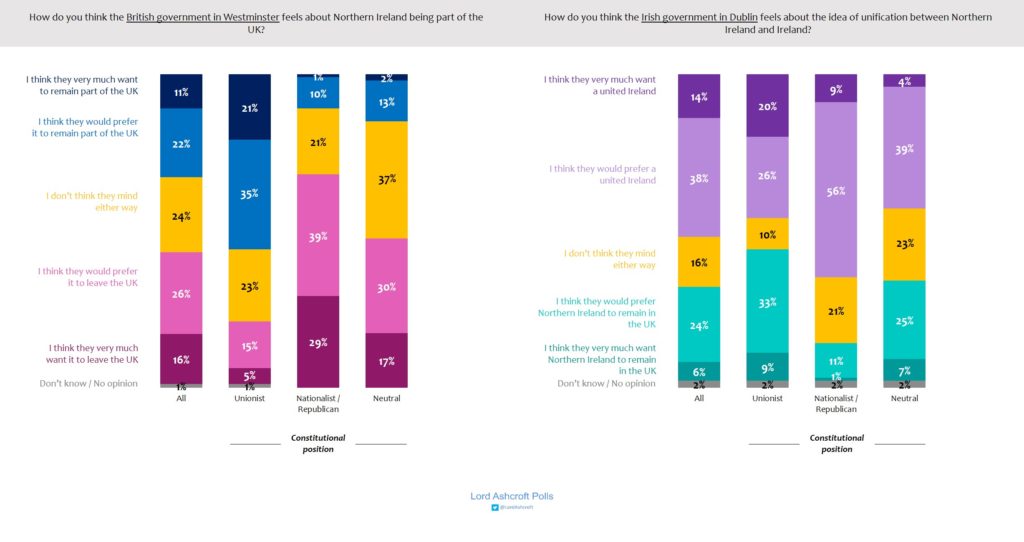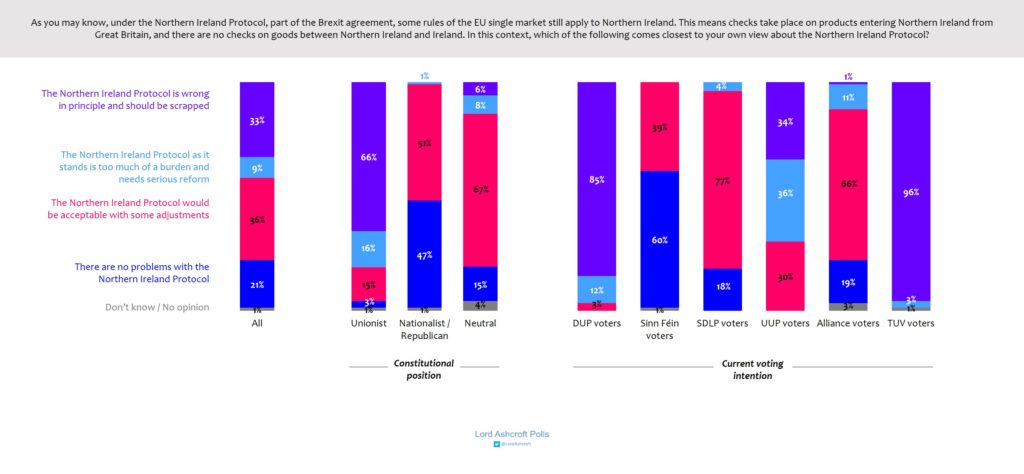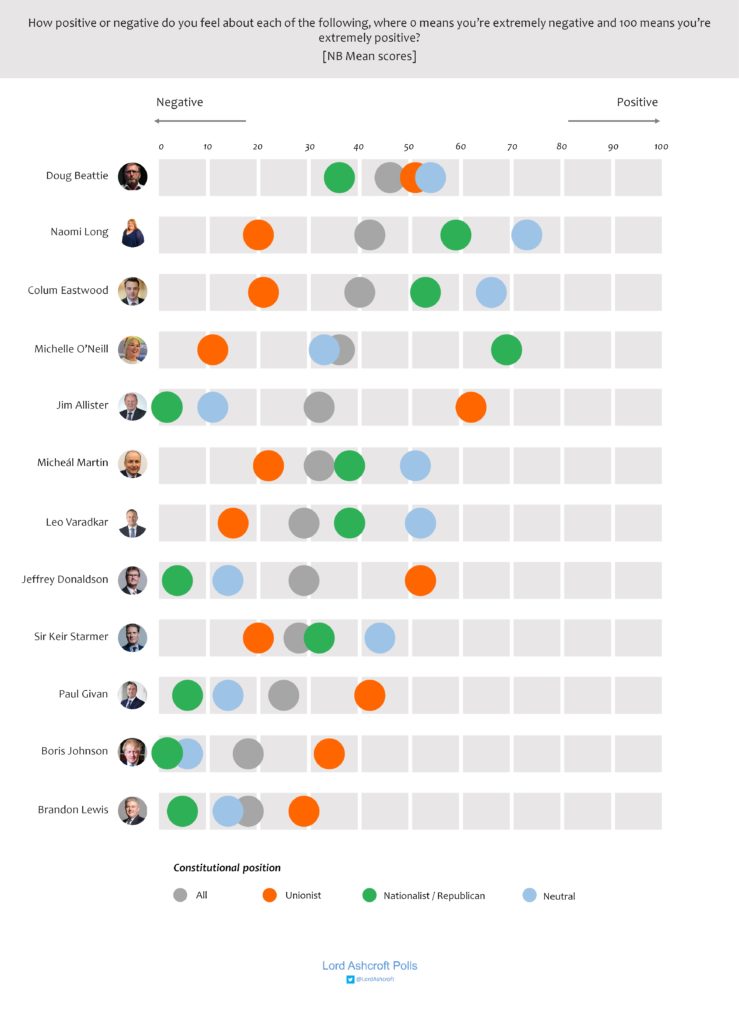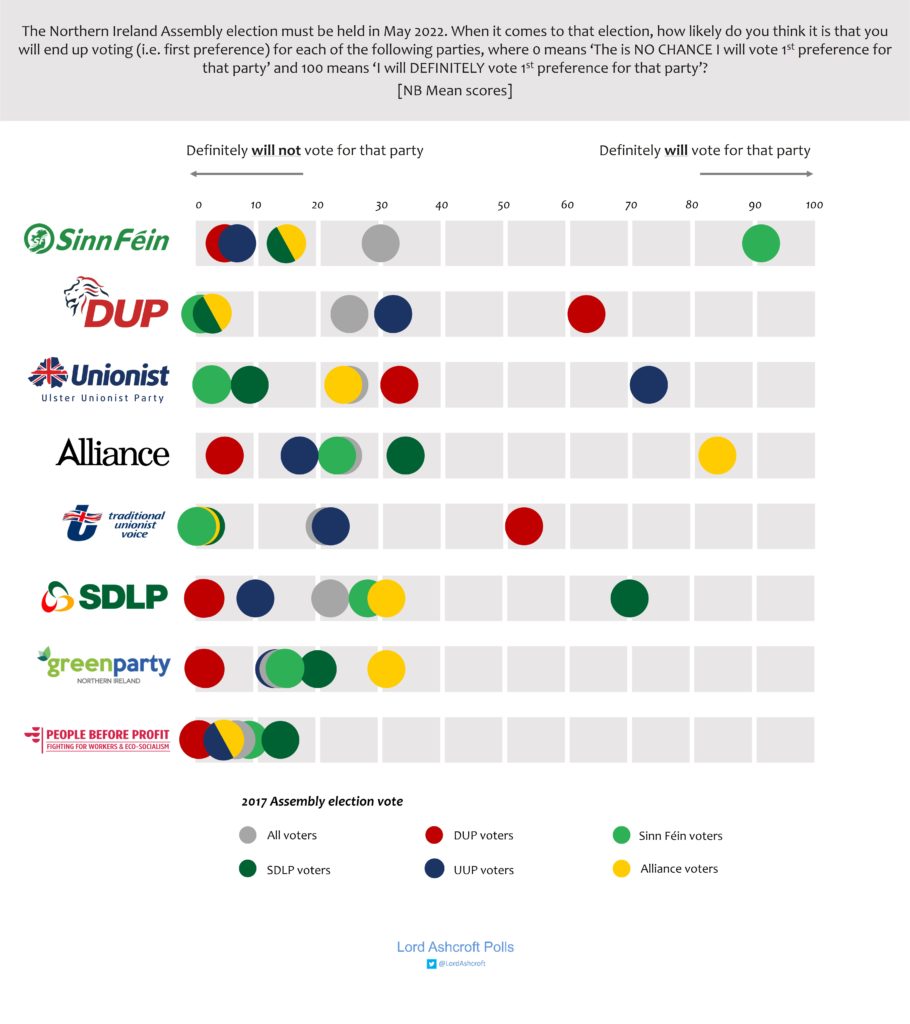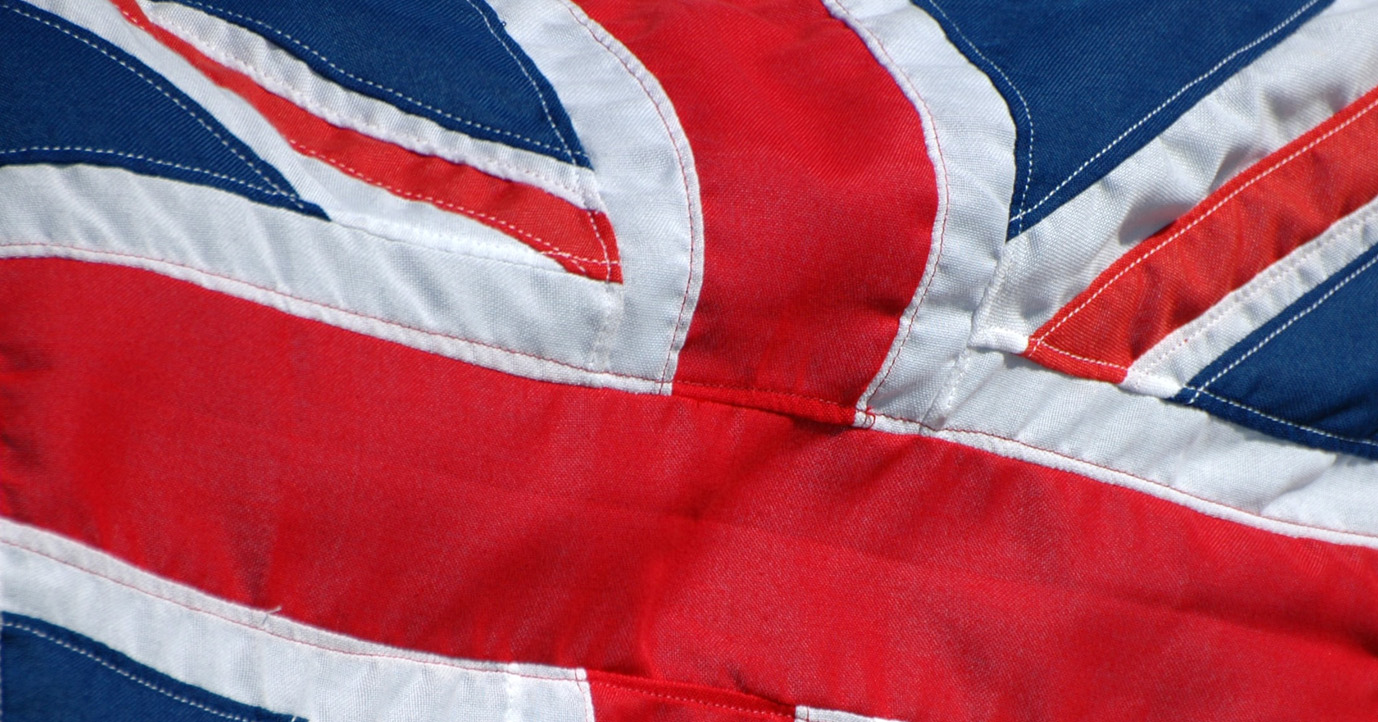
Two years ago, my polling found a wafer-thin majority among Northern Ireland’s voters for unification with the Republic. My latest research, published today, shows a clear swing back towards remaining in the United Kingdom – an echo of the fall in support in recent months for Scottish independence. But as I also found in my survey of over 3,000 voters and focus group discussions throughout the province, it is the nationalists who feel things are heading their way.
Unification, or the Union?
Asked how they would vote in a referendum or “border poll” tomorrow, 49% said they would vote to stay in the UK, 41% said they would choose a united Ireland, and one in ten said they were undecided: a majority of 54% to 46% for the Union among those voting.
While more than 19 out of 20 DUP and Sinn Féin voters backed the UK and unification respectively, SDLP backed a united Ireland by 56% to 12%, while nearly one in three saying they didn’t know. Four in ten Alliance voters were undecided, with the remainder backing Irish unification by 35% to 25%. Support for a united Ireland declined sharply with age: 71% of those aged 18 to 24 said they would choose unification with the Republic.
More than a quarter (27%) of voters said they had changed their mind as to whether Northern Ireland should stay in the UK, including 16% saying they had done so more than once. More than 3 in 10 women, 38% of 18- to 24-year-olds and 71% of those who described themselves as neutral on the constitution said they had changed their mind at least once. Protestants (86%) were more likely than Catholics (64%) to say they had never changed their view on the matter.
What would the result be tomorrow – and in 10 years?
More than 6 in 10 (63%) said they thought Northern Ireland would vote to stay in the UK in a referendum tomorrow – but by 51% to 34%, they thought a border poll in ten years’ time would produce a majority for a united Ireland.
While 9 in 10 unionists thought voters would choose the UK in an immediate border poll, only 64% thought this would be the outcome a decade from now. More than three quarters of SDLP voters and 95% of Sinn Féin supporters said they thought a referendum in 10 years would result in a united Ireland.
The longer view
Looking at the longer term, just over half (52%) of all voters said they expected Northern Ireland still to be part of the UK in ten years’ time. However, only 36% thought this would still be the case in 20 years, and only 25% in 50 years.
While nationalists overwhelmingly expected Northern Ireland to be out of the UK within 20 years, two thirds (67%) of unionists thought they would still be part of the Union at that stage. However, fewer than half (47%) of unionists thought the status quo would still prevail in 50 years; 23% said they thought Ulster would have left by then, and 30% said they didn’t know.
What would be different in a united Ireland?
Voters as a whole were more likely to think that food and energy prices, housing costs, tax rates and unemployment (but also business investment) would be higher in a united Ireland than that they would be lower. Public spending and welfare benefits were thought more likely to be lower than higher.
By a small margin, voters thought equality and “parity of esteem” for different communities would be better in a united Ireland rather than worse – though 78% of unionists thought the opposite. Overall, more thought the standard of living for most people was more likely to be worse in a united Ireland than better.
In focus group discussions it was clear that these considerations weighed heavily with many voters. Those who liked the idea of Irish unity in principle often mentioned the cost of living and healthcare charges as balancing factors.
What do Westminster and Dublin want?
Northern Ireland voters were more likely to think the Westminster government would like to see the province leave the UK than that it would prefer it to stay. Only just over one in ten (11%), and only just over half (56%) of unionists, thought Westminster very much wanted to keep Ulster in the Union. A quarter thought the UK government didn’t mind either way, while more than four in ten thought it would prefer (26%) or very much wanted (16%) for Northern Ireland to leave.
In our focus groups, voters on all sides said they thought Northern Ireland was an “inconvenience” or an “afterthought” for the rest of the UK. The “levelling up” agenda seemed to apply to the north of England, rather than anywhere further afield.
At the same time, only just over half (52%) of Northern Ireland voters thought the Irish government in Dublin would either prefer (38%) or very much wanted (14%) for Ulster to join the Republic in a united Ireland. Two thirds of nationalists thought Dublin would like to see a united Ireland, compared to just under half (46%) of unionists.
Brexit and the Protocol
A clear majority (63%, including 19% of those who had voted Leave) said they thought leaving the EU had been the wrong decision as far as Northern Ireland was concerned. Two thirds of unionists thought it had been the right decision, while 95% of nationalists thought it had been a mistake.
Nearly 9 in 10 voters (88%) thought Brexit had been at least partly to blame for shortages of food and other goods in Northern Ireland shops; 62% said it had been a major factor. Unionists, however, were more likely to blame the pandemic and (especially) the Northern Ireland Protocol. Nearly 8 in 10 (78%) of them, including 89% of 2017 DUP voters, said they thought the Protocol had been a major cause of shortages, compared to 38% of unionists who said the same of Brexit more generally.
One in three voters – including 66% of unionists, 83% of 2017 DUP voters and 96% of those saying they are likely to vote for Traditional Unionist Voice (TUV) at the next Assembly election – said they thought the Protocol was wrong in principle and should be scrapped. A further 9% said the Protocol as it stands was too much of a burden and needed serious reform.
Another 36%, including two thirds of Alliance voters and a quarter of UUP voters, said they thought the Protocol would be acceptable with some adjustments. Just over one in five (21%) of Northern Ireland voters overall, including a majority (56%) of those who voted for Sinn Féin in 2017, said they thought there were no problems with the Protocol.
Parties, leaders, and the next Assembly elections
Asked how positive or negative they felt about Northern Ireland’s political leaders, voters as a whole gave the highest scores to Doug Beattie of the UUP, Naomi Long of the Alliance Party, and SDLP leader Colum Eastwood.
Those who voted for the DUP in the 2017 Assembly elections rated TUV leader Jim Allister higher than DUP leader Jeffrey Donaldson and First Minister Paul Givan – as did voters as a whole. Many in our focus groups lamented what they regarded as the lack of clear leadership at Stormont, especially with the roles of First Minister and DUP leader being held by different people.
Asked how likely they were to vote for each party at the next Assembly elections, DUP voters were the least likely to say would stick with their 2017 party. Taking those who rated their chances of voting for a particular party at 90/100 or above, we find Sinn Féin ahead on 25% with the DUP on 16%, the Alliance on 14%, TUV on 12% and the UUP and SDLP each on 10%. In our focus groups, voters on all sides felt there was a very good chance of Sinn Féin becoming the largest party and winning the First Minister post in 2022.
